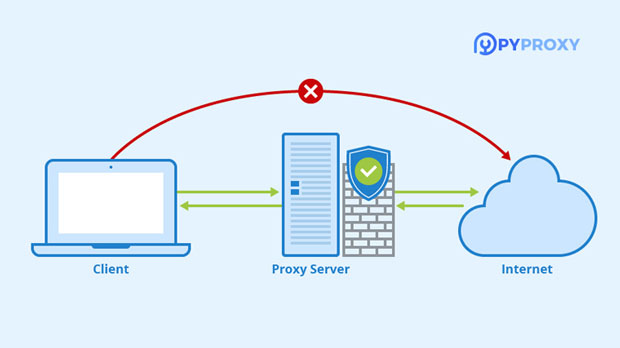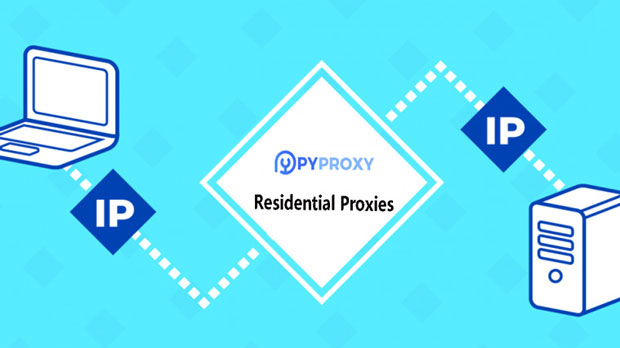In today's digital age, the need for secure and efficient internet browsing has become more critical than ever. While socks5 proxies and HTTP proxies both serve to route internet traffic through intermediary servers, they each have distinct advantages and limitations. The need to convert SOCKS5 to HTTP proxy arises in situations where HTTP-specific features, such as better support for web applications, caching, and content filtering, are required. By converting SOCKS5 to HTTP, users can leverage the benefits of both protocols, enhancing security, compatibility, and overall network performance. This conversion ensures that users can bypass specific network restrictions, optimize browsing speed, and improve access to content that may be blocked or limited by firewalls. In this article, we will delve into why this conversion might be necessary and how it can improve the online experience for various users. Understanding SOCKS5 and HTTP Proxy ProtocolsBefore delving into the reasons for converting SOCKS5 to HTTP proxy, it is essential to understand what each of these protocols entails. Both SOCKS5 and HTTP proxies are designed to reroute internet traffic through a third-party server, helping to mask the user's IP address and ensure anonymity. However, they operate in different ways. socks5 proxy SOCKS5 is a versatile proxy protocol that can handle a wide range of internet traffic. It supports a variety of protocols, including HTTP, FTP, and even UDP traffic. SOCKS5 provides a high degree of anonymity and flexibility, as it doesn’t alter the content of the packets being sent. However, its lack of deep integration with web protocols can make it less efficient for certain web-based applications.HTTP Proxy HTTP proxies, on the other hand, are designed specifically for web traffic. They only process HTTP/HTTPS requests and are better optimized for web browsing. They can perform various tasks such as caching web pages, filtering content, and enabling secure connections through SSL encryption. HTTP proxies are often easier to configure with web browsers and are preferred for tasks related to website browsing and content delivery.Key Reasons to Convert SOCKS5 to HTTP ProxyNow that we have a basic understanding of these two protocols, let’s explore the primary reasons why converting SOCKS5 to HTTP proxy can be beneficial.1. Compatibility with Web ApplicationsMany modern web applications, such as social media platforms, streaming services, and online banking websites, are optimized for HTTP traffic. When using a SOCKS5 proxy, some of these applications may not function as expected, as SOCKS5 is not inherently optimized for HTTP-based requests. HTTP proxies, on the other hand, are designed specifically for web traffic, ensuring better compatibility with web applications.For example, some websites rely on certain HTTP headers or cookies to function properly. SOCKS5 proxies do not process these headers in the same way that HTTP proxies do, which can lead to errors or restricted access. By converting SOCKS5 to HTTP, users can ensure seamless browsing and access to all features of web applications.2. Enhanced Security and Privacy FeaturesHTTP proxies can offer more advanced security and privacy features compared to SOCKS5 proxies. One key feature is SSL encryption. Many HTTP proxies support HTTPS (SSL/TLS) encryption, which ensures that the data being transferred between the client and the proxy server is encrypted, making it more secure against potential eavesdropping or man-in-the-middle attacks.Additionally, HTTP proxies can be used with web application firewalls (WAFs) to filter malicious traffic and prevent unauthorized access to web servers. By converting SOCKS5 to HTTP, users can take advantage of these security features to protect sensitive data and enhance online privacy.3. Improved Caching and PerformanceAnother reason to convert SOCKS5 to HTTP proxy is the enhanced performance that HTTP proxies offer, especially when it comes to caching. HTTP proxies can cache frequently accessed web pages, which reduces the load time for subsequent visits. This is particularly beneficial for users who access the same websites repeatedly, as the proxy can serve cached content, minimizing the need to fetch data from the source server each time.Caching is a feature that SOCKS5 proxies do not support. While SOCKS5 proxies are useful for general anonymity and bypassing geo-restrictions, they do not offer the same level of performance optimization for web browsing that HTTP proxies do. By converting to HTTP, users can enjoy faster browsing speeds and more efficient access to frequently visited sites.4. Bypassing Geo-Restrictions and Content FiltersHTTP proxies are often equipped with content filtering and geo-restriction bypassing capabilities, making them an excellent choice for users looking to access region-blocked content. While SOCKS5 proxies can bypass some basic restrictions, they lack the specific tools required to deal with complex content filtering mechanisms.By converting SOCKS5 to HTTP, users can take advantage of the advanced filtering mechanisms inherent in HTTP proxies. For example, HTTP proxies can rewrite HTTP headers, which allows them to bypass region-specific firewalls and content filters more effectively. This makes HTTP proxies a better option for users who need to access content restricted by geographic location or company-imposed internet filters.5. Better Performance in High-Traffic ScenariosIn environments where high traffic or multiple users are involved, the efficiency of the proxy protocol becomes crucial. HTTP proxies are often better suited for handling high volumes of web traffic due to their ability to process HTTP requests more efficiently. They can also support features like load balancing and more advanced routing, which help ensure that multiple users or devices can access the internet simultaneously without significant delays.SOCKS5 proxies, while flexible, may not handle large-scale or high-traffic scenarios as well as HTTP proxies due to their broader focus on different types of traffic. Converting to an HTTP proxy can help ensure smoother and faster internet access when dealing with large amounts of data or numerous simultaneous users.6. Simplified Configuration and Compatibility with BrowsersConfiguring a SOCKS5 proxy often requires additional setup, especially when dealing with web browsers. SOCKS5 proxies are not inherently integrated into browsers, meaning that users must configure their network settings or use third-party software to route traffic through a SOCKS5 proxy. This can be cumbersome for non-technical users.In contrast, HTTP proxies are commonly built into most web browsers, making them easier to configure. Most modern browsers support HTTP proxies natively, allowing users to quickly set up the proxy and start browsing without additional configuration steps. For users who prioritize convenience and ease of use, converting SOCKS5 to HTTP provides a more streamlined experience.ConclusionConverting SOCKS5 to HTTP proxy can offer several advantages, particularly when users need to optimize their browsing experience, enhance security, and improve compatibility with web-based applications. The ability to access cached content, bypass geo-restrictions, and take advantage of advanced security features makes HTTP proxies a better fit for certain online activities, especially web browsing. By understanding the differences between SOCKS5 and HTTP proxies, users can make an informed decision about which protocol to use and whether converting from one to the other would benefit their online needs.In summary, while SOCKS5 proxies offer significant flexibility and anonymity, HTTP proxies are often better suited for web traffic, providing greater security, performance, and ease of use. For users who need seamless access to web applications and content, converting SOCKS5 to HTTP is a practical and valuable step.
Jan 02, 2025






















































